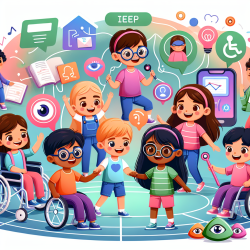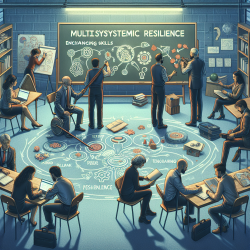Introduction
As practitioners in the field of speech-language pathology, we constantly seek innovative ways to enhance our therapeutic interventions and outcomes for children. While our field might seem worlds apart from high-energy physics, insights from diverse scientific disciplines can often illuminate new paths for improvement. The recent research on primary vertex reconstruction at the ATLAS experiment during Run 1 proton-proton collisions at the LHC offers such an opportunity.
Understanding Primary Vertex Reconstruction
Primary vertex reconstruction is crucial in high-energy physics experiments like ATLAS, as it helps identify the points in space where proton-proton interactions occur. This process is vital for reconstructing hard-scatter interactions and accurately assigning charged-particle trajectories, which are essential for understanding the full kinematic properties of an event.
The study conducted at the ATLAS experiment focused on improving the precision and efficiency of primary vertex reconstruction, particularly in high pile-up conditions, where multiple interactions occur simultaneously. The researchers achieved significant improvements in longitudinal and transverse position resolutions, which are critical for accurate data analysis.
Applying Research Insights to Speech-Language Pathology
While the context of primary vertex reconstruction might seem distant from our daily practice, the principles of precision, efficiency, and data-driven decision-making are universally applicable. Here are some ways we can draw parallels and apply these insights:
- Precision in Assessment: Just as precise vertex reconstruction is essential for accurate data interpretation in physics, precision in assessment is crucial for tailoring effective interventions in speech-language pathology. Utilizing data-driven tools and techniques can enhance our diagnostic accuracy.
- Efficiency in Intervention: The iterative approach used in vertex reconstruction to refine the position of vertices can inspire us to adopt iterative methods in therapy. Regularly assessing and adjusting our interventions based on data can lead to more efficient and effective outcomes.
- Handling Complex Cases: High pile-up conditions in physics require sophisticated algorithms to disentangle overlapping interactions. Similarly, complex cases in speech-language pathology may benefit from advanced analytical approaches to address multiple co-occurring challenges.
Encouraging Further Research
The research on primary vertex reconstruction highlights the importance of continuous improvement and innovation. As practitioners, we should be inspired to engage in further research and collaboration across disciplines to enhance our understanding and application of data-driven methods.
By embracing insights from diverse fields, we can push the boundaries of what is possible in speech-language pathology, ultimately leading to better outcomes for the children we serve.
Conclusion
The ATLAS experiment's advancements in primary vertex reconstruction offer valuable lessons for our field. By focusing on precision, efficiency, and data-driven decisions, we can enhance our practice and improve outcomes for children. Let's continue to explore and integrate insights from various scientific disciplines to drive innovation in speech-language pathology.
To read the original research paper, please follow this link: Reconstruction of primary vertices at the ATLAS experiment in Run 1 proton–proton collisions at the LHC.










